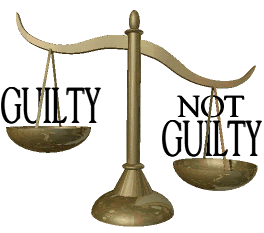Handling of gang data revised by Ramsey County sheriff
Please click onto the COMMENTS for the story.
DISCUSSIONS ON POLITICS, CIVIL RIGHTS, PROPERTY RIGHTS, AND ANYTHING THAT TICKLES OUR FANCY "HOST BOB JOHNSON" CONTACT Us at A_DEMOCRACY@YAHOO.COM Please stay on topic and no personal attacks.

posted by Bob at Thursday, January 07, 2010
![]()
![]()
 A DEMOCRACY TOWN HALL HOME
Do you have a topic you want to discuss at the Town Hall? Email your request to A_Democracy@yahoo.com
“A DEMOCRACY” Disclaimer- While the administrators and moderators of this forum will attempt to remove or edit any generally objectionable material as quickly as possible, it is impossible to review every message. Therefore you acknowledge that all posts made to this forum express the views and opinions of the author and not the administrators, moderators (except for posts by these people) and hence will not be held liable.
You agree not to post any abusive, obscene, vulgar, slanderous, hateful, threatening, sexually-oriented or any other material that may violate any applicable laws. Doing so may lead to you being immediately and permanently banned
A DEMOCRACY TOWN HALL HOME
Do you have a topic you want to discuss at the Town Hall? Email your request to A_Democracy@yahoo.com
“A DEMOCRACY” Disclaimer- While the administrators and moderators of this forum will attempt to remove or edit any generally objectionable material as quickly as possible, it is impossible to review every message. Therefore you acknowledge that all posts made to this forum express the views and opinions of the author and not the administrators, moderators (except for posts by these people) and hence will not be held liable.
You agree not to post any abusive, obscene, vulgar, slanderous, hateful, threatening, sexually-oriented or any other material that may violate any applicable laws. Doing so may lead to you being immediately and permanently banned
 THE ROOF GUYS
THE ROOF GUYS
 Mickey's Diner 1950 7th Street West, St Paul, MN
(651) 698-8387
Mickey's Diner 1950 7th Street West, St Paul, MN
(651) 698-8387
 AX-MAN SURPLUS
1639 University Ave.
St. Paul, MN 55104
Tel:(651)646-8653
AX-MAN SURPLUS
1639 University Ave.
St. Paul, MN 55104
Tel:(651)646-8653
 LANDLORD.COM LINK HERE
LANDLORD.COM LINK HERE




 SHHHH! While we listen to words of wisdom from a wise man.
Conscience is the light of the Soul that burns within the chambers of our psychological heart. It is as real as life is. It raises the voice in protest whenever anything is thought of or done contrary to the righteousness. Conscience is a form of truth that has been transferred through our genetic stock in the form of the knowledge of our own acts and feelings as right or wrong. A virtuous and courageous person can alone use the instrument of conscience. He or she can alone hear the inner voice of the soul clearly. In a wicked person this faculty is absent. The sensitive nature of his / her conscience has been destroyed by sin or corruption. Hence he or she is unable to discriminate right from wrong. Those who are leading organizations, business enterprises, institutions and governments should develop this virtue of the ability to use their own conscience. This wisdom of using the clean conscience will enable them to enjoy the freedom.
Dr APJ Kalam, President of India given during the inauguration of the seminar on “THE EFFECTS OF CORRUPTION ON GOOD GOVERNANCE AND HUMAN RIGHTS
SHHHH! While we listen to words of wisdom from a wise man.
Conscience is the light of the Soul that burns within the chambers of our psychological heart. It is as real as life is. It raises the voice in protest whenever anything is thought of or done contrary to the righteousness. Conscience is a form of truth that has been transferred through our genetic stock in the form of the knowledge of our own acts and feelings as right or wrong. A virtuous and courageous person can alone use the instrument of conscience. He or she can alone hear the inner voice of the soul clearly. In a wicked person this faculty is absent. The sensitive nature of his / her conscience has been destroyed by sin or corruption. Hence he or she is unable to discriminate right from wrong. Those who are leading organizations, business enterprises, institutions and governments should develop this virtue of the ability to use their own conscience. This wisdom of using the clean conscience will enable them to enjoy the freedom.
Dr APJ Kalam, President of India given during the inauguration of the seminar on “THE EFFECTS OF CORRUPTION ON GOOD GOVERNANCE AND HUMAN RIGHTS
On A Truth Seeking Mission A Democracy
The Black Background Represents The Dark Subjects We Debate - The White Print Represents The Pure And Simple Truth
*****YA ALL COME BACK NOW YA HEAR*****
2 Comments:
About 6,000 names purged and parental notification added
By Mara H. Gottfried
mgottfried@pioneerpress.com
Updated: 01/07/2010 12:19:14 AM CST
"GangNet had been in place for 10 years and needed a policy review," Sheriff Bob Fletcher said. After an independent report urged changes to a law enforcement database of possible gang members, the Ramsey County sheriff's office has deleted more than one-third of the names and added a parental notification component for juveniles, Sheriff Bob Fletcher said Wednesday.
The sheriff's office uses 10-point criteria to determine gang membership or affiliation, and names in GangNet were purged when individuals met no new criteria in 10 years. Now, names will be purged if new criteria aren't met in five years. This prompted deletion of about 6,000 names, Fletcher said at Wednesday's meeting of Minnesota's Gang and Drug Oversight Council.
The University of St. Thomas School of Law's Community Justice Project, in collaboration with the St. Paul NAACP, released a report on GangNet and the Minnesota Gang Pointer File last month. Fletcher, whose office maintains GangNet for use by officers across the state, met with those groups last week and discussed the report's recommendations.
"Their study was timely in that GangNet had been in place for 10 years and needed a policy review," Fletcher said after Wednesday's meeting. He said he thinks changing the purging timeline to five years "strikes the right balance between law enforcement's need to know about who is involved with gang activity and individual rights."
Nekima Levy-Pounds, the Community Justice Project's director and a St. Thomas associate law professor, and St. Paul NAACP President Nathaniel Khaliq said the
GangNet changes are important first steps. They also said they hope for more progress.
Levy-Pounds said they advocate purging names that meet no new criteria after three years — in line with the Pointer File, which is governed by state law. The Minnesota Bureau of Criminal Apprehension maintains that database of confirmed gang members, based on the same 10-point criteria.
The new, five-year purge for GangNet is the best practice nationwide for intelligence-based databases, Fletcher said.
GangNet had about 16,500 names and now contains roughly 10,500, Fletcher said.
Being in GangNet, which has a much lower threshold for entry than the Pointer File, does not mean someone is a gang member, Fletcher has said. GangNet is a place where information is compiled, so law enforcement knows when someone has met the threshold of being a confirmed gang member to be entered in the Pointer File, according to the sheriff. The Pointer File includes about 2,500 names.
People entered into either database are not notified. The St. Thomas report suggested that people be notified, with an opportunity to contest information at a hearing. It put special attention on the parents of juveniles being notified (an individual must be at least 14 to be entered in either database), especially as a way to stop a teen from joining a gang.
Fletcher said his office will soon begin sending letters to parents of juveniles newly placed in GangNet.
"Parents deserve to know if their child is suspected of being involved in gang activity, so they can take some steps to remedy the cycle," Fletcher said.
It's a "huge" step, Levy-Pounds said, adding that they requested the sheriff's office also notify parents of juveniles already in the database.
Fletcher said his office is exploring the possibility of sending such letters to parents of juveniles who were put into GangNet over the past six months but may not have the resources to do more.
A spokesman for state Public Safety Commissioner Michael Campion, who oversees the BCA, said Wednesday that no decisions have been made about the report's recommendations concerning the Pointer File.
The St. Thomas report also pointed out concerns voiced in community meetings, which began last summer in St. Paul.
"(A)re the criteria too subjective and/or repetitive?" the report asked. "More importantly, do the criteria disproportionately impact youth of color?"
The people in both databases are largely minorities: 55 percent in the Pointer File and 42 percent in GangNet were black, as of November 2008.
The report recommends that the Gang and Drug Oversight Council, which established the 10-point criteria about a decade ago, review the criteria and "remove or tailor" them to "accurately identify gang members involved in criminal activity." It also suggested the review process include "organizations that have a positive rapport and credibility within communities of color."
At Wednesday's meeting of the council, Fletcher said he had offered to bring the group's concerns about the 10-point criteria to the attention of the board, of which he is a member. Wabasha County Sheriff Rodney Bartsh, the council's chairman, said the group would be invited to the March meeting and asked to give a presentation.
Khaliq said the goal is to have a more standardized protocol for gang databases throughout Minnesota.
"I think everybody has the same goals: Law enforcement is fighting to keep communities safe and so are we, but we want a balanced approach," he said.
Mara H. Gottfried can be reached at 651-228-5262.
THE ABC's OF GANG INTELLIGENCE
After a state law in 1997 directed the Minnesota Bureau of Criminal Apprehension to create a database of gang members, the Gang and Drug Oversight Council came up with these criteria:
l Admits gang membership or association.
l Is observed to associate on a regular basis with known gang members.
l Has tattoos indicating gang membership.
l Wears gang symbols to identify with a specific gang.
l Is in a photograph with known gang members and/or using gang-related hand signs.
l Name is on a gang document, hit list or gang graffiti.
l Is identified as a gang member by a reliable source.
l Is arrested in the company of identified gang members or associates.
l Corresponds with known gang members or writes and/or receives correspondence about gang activities.
l Writes about gangs (graffiti) on walls, books and paper.
Criteria for law enforcement to enter a person in Minnesota Gang Pointer File:
l Meets three of the 10 criteria.
l Is at least 14 years old.
l Has been convicted of a felony or gross misdemeanor.
Criteria for law enforcement to enter a person in GangNet:
l Meets one of the 10 criteria.
l Is at least 14 years old.
l Not required to have been convicted of a felony or gross misdemeanor.
Post a Comment
<< Home